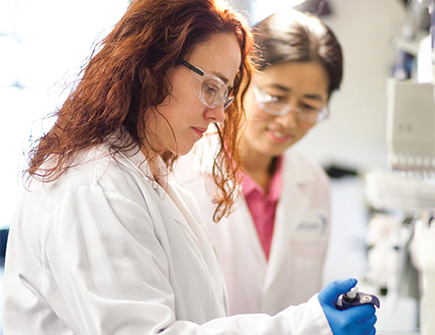We focus our efforts on a clearly defined scientific approach.
Evolving Tumor Microenvironment Strategy
Our evolving strategy centers on innovative approaches to drug development based on a deep understanding of the critical relationships between cancer cells and the tumor microenvironment,* with particular focus on the tumor immunoenvironment.† For the first time, paradigm-shifting therapeutic targets are now within reach as we learn more about the extent to which tumor cells interact with immune cells and other components of the tumor microenvironment, and the critically important role this plays in cancer initiation, progression, metastasis and drug resistance.
Our approach is distinguished by our pursuit of companion diagnostics to enable the safe and effective identification of early changes in the tumor microenvironment that can become targets for therapeutic intervention, combined with the diagnostic ability to target the right treatment to the right patient at the right time.
Areas of Interest
- Cancer-associated stroma
- Tumor-associated macrophages
- Tumor immunology
- Immunomodulation
- Autophagy and stress response
- Cancer metabolism pathways
- Invasive growth and hypoxia
- Cancer interception
*The tumor microenvironment is the cellular environment in which the tumor exists, including surrounding blood vessels, immune cells, fibroblasts, other cells, signaling molecules and the extracellular matrix. A tumor can change its microenvironment, and the microenvironment can affect how a tumor grows and spreads.
†Immune cells have a role in controlling the tumor microenvironment at different stages of cancer development. The immune system can protect against cancer, but it also can accelerate the growth of cancer cells.




